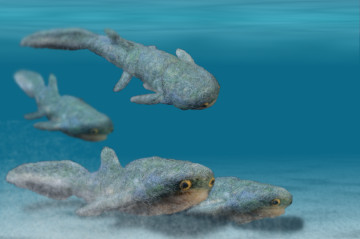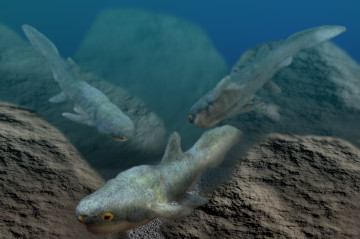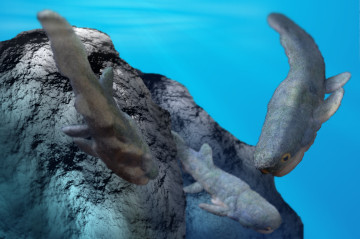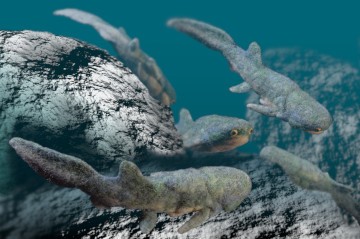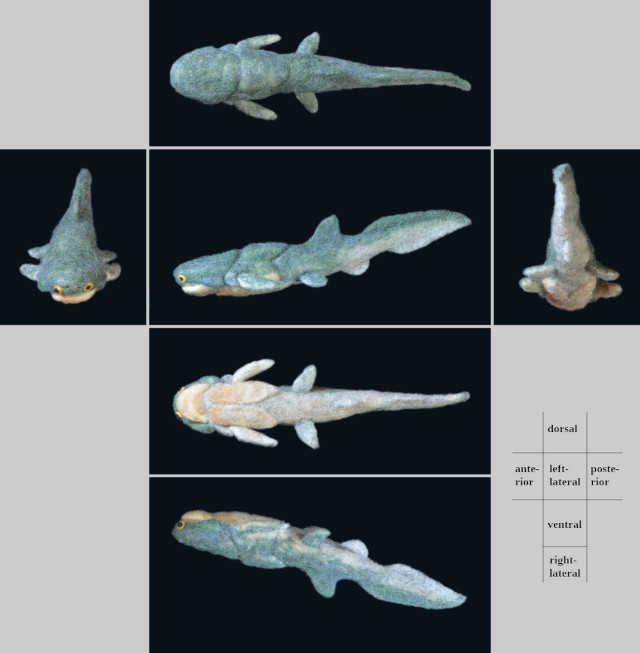Entelognathus primordialis
Entelognathus, which is discovered in 2013, has a head and a trunk covered with shield and armour like other placoderms, and the larger one seemed to be over 20 cm long 2).
A noteworthy feature of this placoderm fish is that it has a premaxilla, maxilla, and dentary, which are the features of Osteichthyes 2).
The Kuanti Formation includes a number of the marine fossils 1), and thus Entelognathus is also a marine fish. Given the positions of eyes and mouth, Entelognathus seems to be a predator preyed on small animals, swimming near the seafloor.
It is proposed that Entelognathus is placed to near the top of the gnathostome stem group, the immediate sister group of crown gnathostomaes 1), 2).
If the jaw of Entelognathus eventually evolved into those of bony fishes, this would provide a siginificant clue to understand the evolutionary scenario of the jawed vertebrates, including us.
created in June - December 2023.
References:
- Choo B, Zhu M, Qu Q, Yu X, Jia L, Zhao W (2017) A new osteichthyan from the late Silurian of Yunnan, China. PLoS ONE 12(3): e0170929. (DOI: 10.1371/journal.pone.0170929.)
- Zhu M, Yu X, Ahlberg PE, Choo B, Lu J, Qiao T, Qu Q, Zhao W, Jia L, Bloom H, Zhu Y (2013) A Silurian placoderm with osteichthyan-like marginal jaw bones. [abstract] Nature 502 : 188 - 193. (DOI: 10.1038/nature12617.) (The full-text was referred to ResearchGate.)

